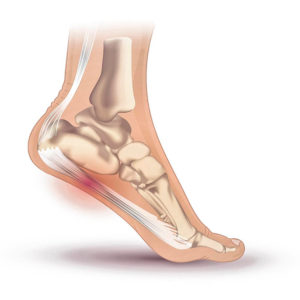Pain in the arch of the foot: Fasciitis Plantar
- This pain can be caused by tension exerted on the plantar fascia ligament when stretched irregularly, which causes small tears and inflammation. Stretching and strengthening exercises can help the ligament become more flexible and can strengthen the muscles that support the arch, while reducing tension on the ligament.

- When combined with other measures such as resting, avoiding activities that make heel pain worse, using insoles, applying ice, or taking pain relievers (pain medications), exercises for plantar fasciitis usually help relieve heel pain.
- Exercises for plantar fasciitis may be especially useful for reducing heel pain as soon as you get out of bed.
- If you have questions about how to do these exercises or if your heel pain gets worse, talk to your doctor.
Plantar fasciitis exercises
- Preheating before sports or exercise and stretching afterwards can make the plantar fascia become more flexible and this can reduce the chances of injury and inflammation.
- You may want to take an analgesic (pain medicine), such as a non-steroidal anti-inflammatory drug, including ibuprofen or naproxen, to relieve inflammation and pain. Some people take it at least 30 minutes before doing the recommended exercise, to relieve pain and to be able to do and enjoy the exercise. Other people take it after exercising. Be cautious with medications. Read and follow all label instructions.
- After exercising, apply ice on the heel to help relieve pain and inflammation.

Stretching exercises before getting out of bed
Many people with plantar fasciitis have severe heel pain in the morning, when they take the first steps after getting out of bed. This pain comes from the tension of the plantar fascia that occurs during sleep. Stretching or massaging the plantar fascia before standing up can often reduce heel pain.
pain in foot arch
- Stretch your foot by flexing it up and down 10 times before standing up.
- Stretch the toes to stretch the plantar fascia.
- Use a towel to stretch the sole of the foot (stretch with a towel).
Other measures can help reduce heel pain when you take the first steps after getting out of bed. You can:
- Use a night splint while sleeping. The night splints hold the ankle and foot in a position that keeps the Achilles tendon and plantar fascia slightly stretched.
- Massage the sole of the foot across the width of the plantar fascia before getting out of bed.
- Always wear shoes when you get out of bed, even if it’s just to go to the bathroom. Good quality sandals, sports shoes or any other comfortable footwear that has a good arch support will work.
Stretching exercises should produce a feeling of tightness. They should not cause pain. Ask your physiotherapist or doctor what exercises will be best for you.
Exercises to do every day
Stretching and strengthening exercises will help reduce plantar fasciitis.
It is better to do each exercise 2 or 3 times a day, but you do not need to do them all at once.
- Use a rolling pin or tennis ball. While sitting, roll the rolling pin or ball with the arch of your foot. If you can, as you go, do the exercise while standing.
- Stretching of the toes
- Stretch with a towel
- Stretch of the plantar fascia and calf
- Towel rolls for strengthening
- Raise marbles with the toes for strengthening
